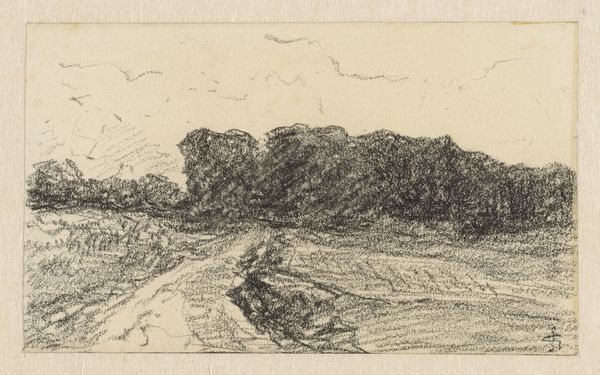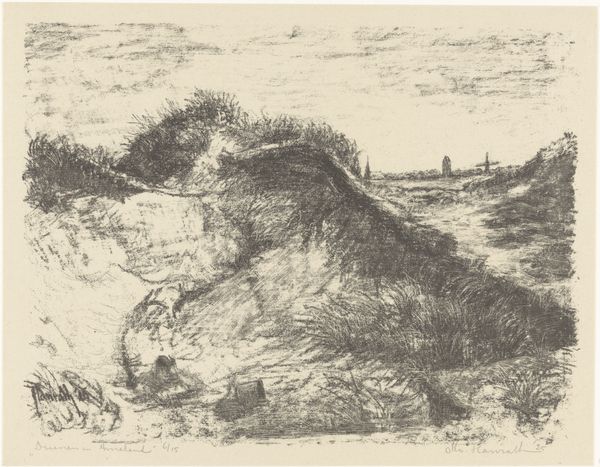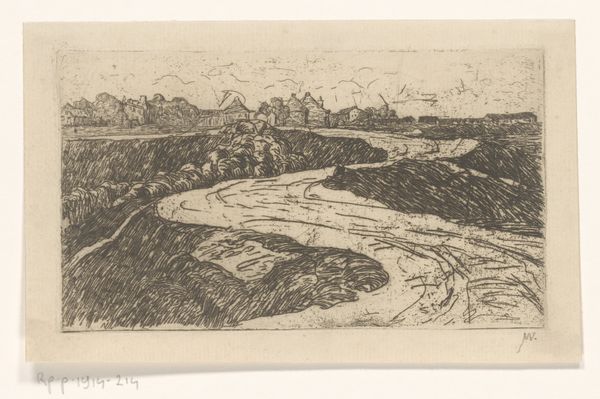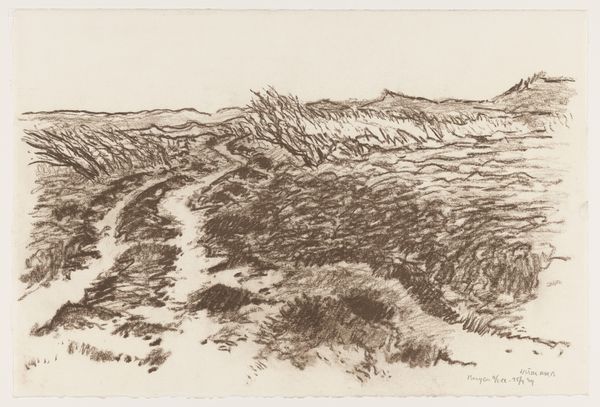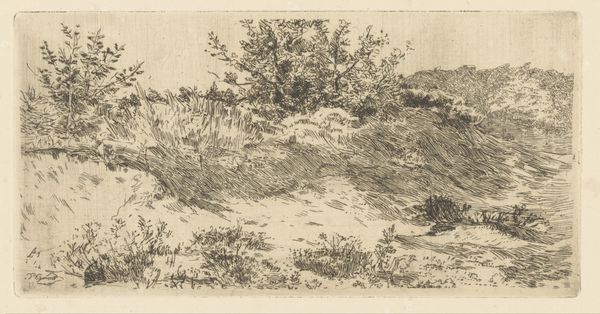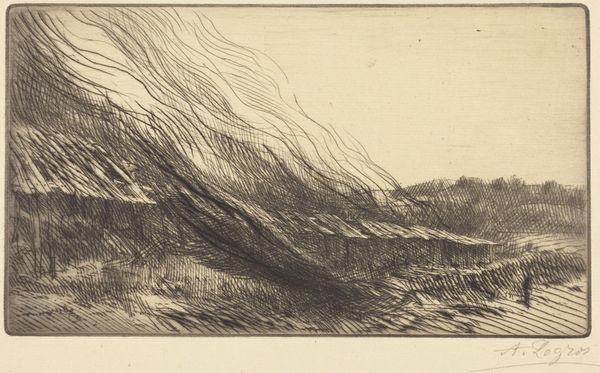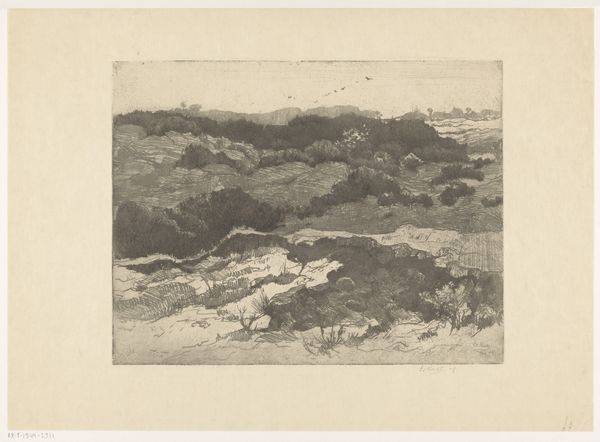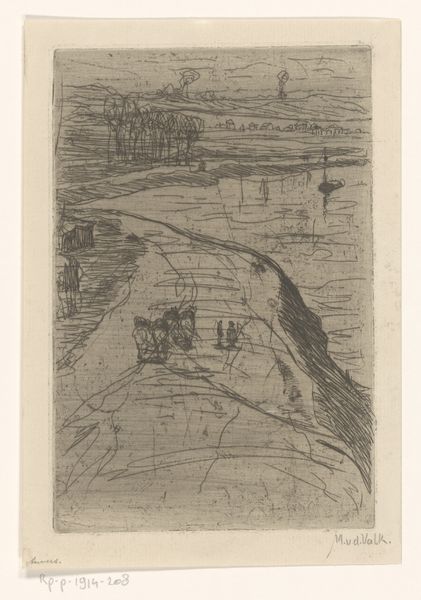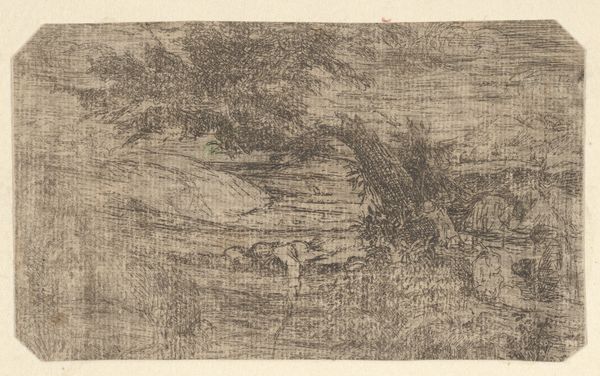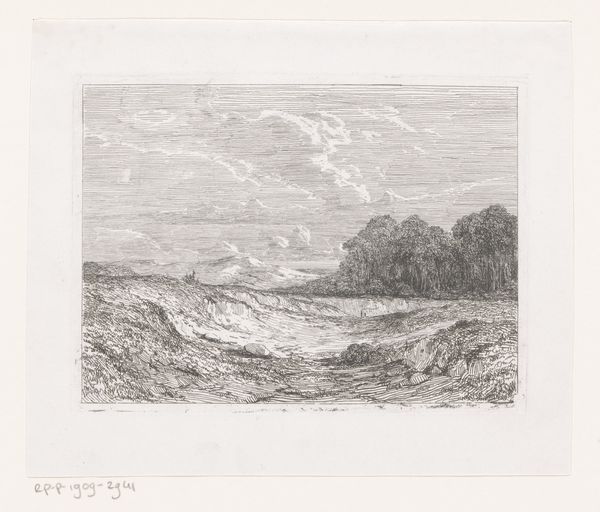
drawing, etching, ink
#
drawing
#
pen drawing
#
etching
#
landscape
#
road
#
ink
#
line
#
pen work
Dimensions: height 198 mm, width 319 mm
Copyright: Rijks Museum: Open Domain
Editor: So, here we have Maurits van der Valk’s “Landweg,” made sometime between 1867 and 1935. It's an etching, using ink on paper, depicting a rather rugged-looking path. The first thing I notice is the texture – it seems so tactile. What do you make of this piece? Curator: Well, I think we can see it as a compelling example of the material transformation from lived experience to commodity. Look at the lines, repeated, almost mass-produced in their uniformity. This road isn’t just a picturesque route, it represents labour, the physical effort embedded in creating and maintaining lines of transit, and that labour has been commodified by Van der Valk for our consumption. How does that impact your viewing? Editor: I see what you mean. It does make you think about the physical work involved. But why choose such a seemingly mundane subject? Why not a grand building or a portrait? Curator: That’s precisely the point! By choosing a simple "Landweg", van der Valk disrupts the hierarchy of subject matter. He is, in a sense, elevating the everyday, demonstrating that artistic value isn't confined to traditionally "high" subjects. The labour and materials that constitute even a humble road deserve artistic consideration. Think of the paper itself - from its creation involving pulp production to its distribution and consumption, even this 'base' material holds layers of human processes, doesn't it? Editor: Yes, it’s fascinating to think about the materials themselves carrying a story of production and labour. I initially just saw a nice landscape, but now I am thinking about what constitutes that landscape, the physical work that created it and the materials necessary to portray it. Curator: Exactly. It encourages us to question what we value in art and why, considering not just the final image, but the whole material and economic process that brings it into being. Editor: Thanks! It's amazing how shifting the focus to materials can reveal so much. Curator: Indeed. It encourages us to consider art not as a detached aesthetic object, but as an embedded product of socio-economic forces.
Comments
No comments
Be the first to comment and join the conversation on the ultimate creative platform.
